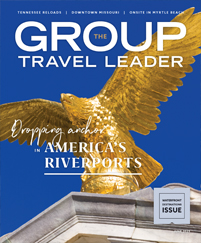You’ve probably heard the opinion that selling group travel person to person doesn’t work in the days of Google. You also probably also know group leaders that sell every trip they promote within a week.
What is their secret? For many successful group leaders, there isn’t one step to take that will ensure a sold-out trip, but rather numerous strategies they’ve tried over the years and continue to tweak. Group leaders can’t afford to let marketing become too routine, since methods can quickly become outdated. Trends frequently shift as people change their minds about what they want, what they are willing to spend and where they want to go. Destinations’ offerings also change from year to year. And technology advances so rapidly that if you aren’t prepared, it can hurt your business rather than help you thrive.
To effectively fill your next motorcoach, try these 10 marketing tips to see which methods work for your group travel business.
1. Know Your Group
The first mistake to avoid when selling group travel is failing to understand your group. Hiking the Andes Mountains may seem like a dream trip to you. But without understanding the desires, budgets and time constraints of your group, you can end up puzzled as to why your group doesn’t buy into such an adventurous trip.
To effectively promote your trips, you must first create marketable tours that reflect your travelers’ interests and budgets. To fix this, survey your travelers at every available chance. Survey them before, during and after a tour with questions such as what days, times, lengths, prices and destinations they prefer. Try to ensure you receive surveys not only from frequent travelers but also from those you would like to attract to your tours.
Use this information to break down your mailing list into as many demographics as possible to tailor the message to specific ages, budgets and interests. For example, wording on a trip aimed at baby boomers will read differently than a tour targeting millennials. Organizing this information beforehand will enable you to easily experiment with different marketing imagery and wording.
2. Know Your Destinations
When someone tells you how much they loved a recent trip, that excitement can feel contagious. Though it’s not always possible, you should try to visit a destination before you try to sell it, since it is easier to convince someone of the magic of a tour when you can provide a firsthand account.
Whenever possible, consider attending familiarization (FAM) tours so you’ll be able to return to your group with authentic enthusiasm. Tour operators and destination marketing organizations run FAM tours regularly, so contact representatives if you feel your presence would help you either by allowing you to customize a tour to fit the needs of your group or by giving you the confidence to convince others to join you.
If you can’t attend a FAM tour, research the destination on your own so you feel comfortable answering any questions that come up. For a more personalized way to drum up interest, invite a tour operator representative to attend a promotional event for the tour where they can talk to potential travelers.











